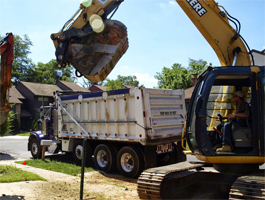Underground Tank Removals
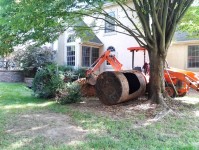
Most underground tanks do not leak but when they do, Moore’s Tank Services will help you determine if you have insurance coverage for cleanup. When a tank does not leak it is evident by the condition of the tank and soils directly under the tank. We will provide a certification for a non-leaking tank as part of the removal process along with the certification provided by the town you live in. Soil samples can be taken as an added confirmation the tank has not leaked if you would like
Removal
Moore’s Tank Services will provide all steps necessary to remove your tank including:
- Apply and obtain local permit
- Call and obtain utility mark out
- Schedule project with homeowner
- Pump out contents of tank
- Dig open and cut access into tank
- Clean sludge and residual.
- Remove tank from the ground
- Obtain township inspection
- Determine condition of the tank and issue Certification if appropriate
- Backfill to grade, tamp and rake out
- Dispose of the tank and contents at a recycling facility
Abandon in Place
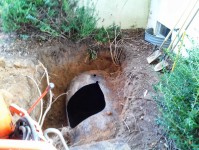 In the case where the tank is located in a position that removal would compromise the structural support of your home, the tank can be abandoned in place. This would include all of the work associated with a tank removal, except the clean tank would be left in the ground and filled with clean fill material. Prior to filling the tank a small hole would be cut in the bottom of the tank and a soil sample obtained to certify the tank has not leaked. Whenever possible we recommend tanks should be removed.
In the case where the tank is located in a position that removal would compromise the structural support of your home, the tank can be abandoned in place. This would include all of the work associated with a tank removal, except the clean tank would be left in the ground and filled with clean fill material. Prior to filling the tank a small hole would be cut in the bottom of the tank and a soil sample obtained to certify the tank has not leaked. Whenever possible we recommend tanks should be removed.
Basement and Aboveground Tank Removals
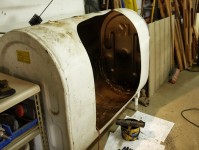 Removing outside above ground tanks, basement tanks and even from your crawl space is a much simpler process. The tanks need to pumped out, cut apart cleaned, and disposed. Oil lines are drained, fill and vent holes in the exterior walls patched. Most of these jobs are inexpensive and only take a few hours.
Removing outside above ground tanks, basement tanks and even from your crawl space is a much simpler process. The tanks need to pumped out, cut apart cleaned, and disposed. Oil lines are drained, fill and vent holes in the exterior walls patched. Most of these jobs are inexpensive and only take a few hours.
Tank Testing
Moore’s Tank Services tests soil below the bottom of the tank on each end of the tank. Soil samples can be field screened immediately and a tentative determination of the tank condition can be made. Formal documentation on the tank condition can be issued five days after the sample was taken to the lab. Samples are taken with a hand auger and advancing a three inch in diameter boring. In most cases the samples can be can extracted inexpensively and with minimal impact to your property
Other forms of testing employed have varied degrees of accuracy. Vaccum testing is accurate for leaks over 1/10th of a gallon per hour. A leak of 1/10th of a gallon per day can create a lot of contamination.
Soil testing is the most reliable way to determine if there has been a discharge of heating oil into the subsurface
Tank Installations
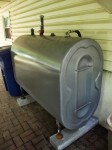 Moore’s Tank Services installs several types of tanks including
Moore’s Tank Services installs several types of tanks including
Roth Double-Wall Residential Oil Storage Tanks Manufacturer Fuel Oil Tank Replacement Tank
- Double Wall & Poly Urethane coated tanks with up to a 25 year warranties
- Standard Tank 10 year warranties
- Steel Residential Tanks & Home Heating Systems | Granby Industries
Documentation and Certification
After a tank has been removed, it is inspected for corrosion holes and the subsurface soils under the tank are checked for contamination. If there is no evidence of a discharge, the township will issue a certification, and Moore’s Tank Services will issue a signed certification with our NJDEP license number. Click here to view our Tank Removal Certification.


